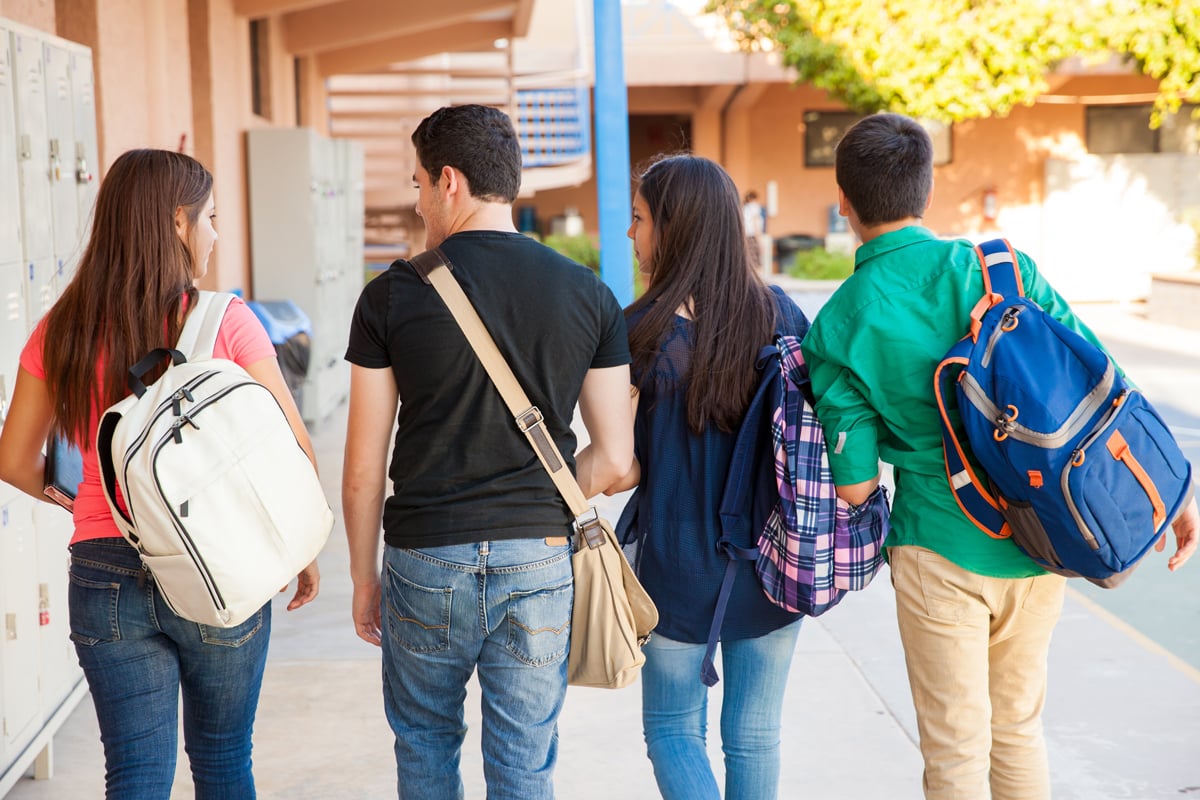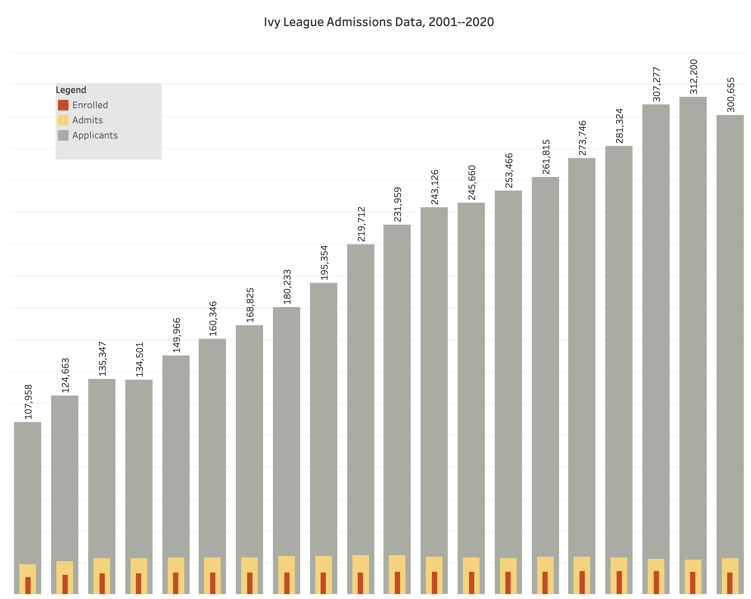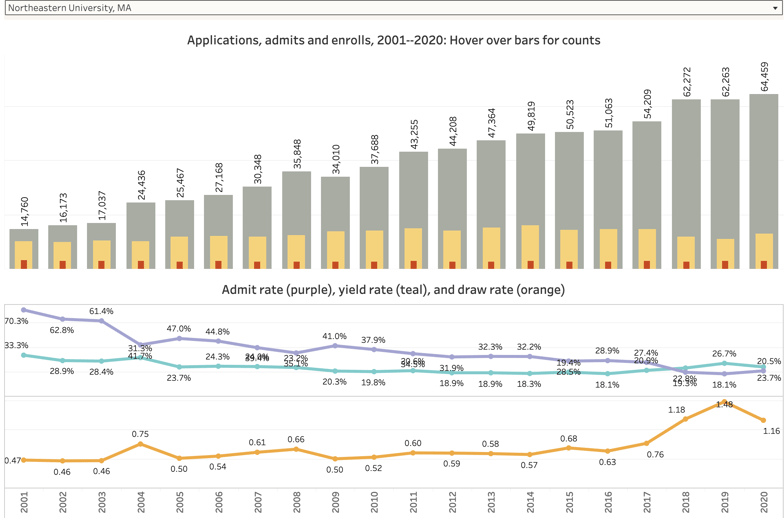Will Taking the ACT/SAT Help Students Get Admitted To College?

Recently, I spoke with a counselor at a typical public suburban high school. I asked how students from her school did with college admissions this spring. The intensity of her response surprised me: she said it was horrible across the board, and that dozens of her students were rejected from colleges that she was sure would admit them. She then shared what she felt was a particularly egregious example:
The counselor had a student with top grades who had chosen to take the toughest courses the school offered, and who had demonstrated strong leadership skills in multiple extra-curricular activities, but was rejected by a private university in Florida. The student was devastated as she had identified that university as her top choice. The counselor called the school and asked them for insights as to why her student wasn't admitted; the college representative was sympathetic but said that they were just overwhelmed with record numbers of applications.
After hearing this, I asked the counselor if the student had submitted SAT or ACT scores. It turned out the student had only taken the SAT once and scored an 1190; on the PSAT the year before she scored an 1170. Having tutored thousands of students over the past 24 years, I couldn’t help wondering if with effective test preparation the student might have scored in the 1300’s (improving 150 points from the PSAT to SAT is very common). I have discussed this with some college counselors and they agreed that a higher test score might have significantly increased the student's chances of being admitted.
But another issue is that the counselor's expectations may not have been reasonable, and might have been based on out of date understanding of enrollment trends. The college admissions landscape has changed a lot in recent years, especially since the COVID-19 pandemic, and it is very difficult for even the most dedicated and attentive college counselors to keep up with developments at hundreds of American colleges and universities. Students are applying to more and more colleges, but since the colleges generally limit the number of students they can enroll, greater application numbers makes admission harder for everyone. Students and parents who are exploring post-secondary options often need help evaluating the likelihood of admission to the schools on their lists, and out of date information does not help anyone. Two resources (freely available on the internet) can give people (students, parents and professionals) more awareness of current conditions and historical trends that will help them to make informed decisions:
•College Scorecard, from the U.S. Department of Education, is an easy to navigate site that lets users learn about the most recent admissions rates, test score ranges and costs. This screenshot shows relevant data for my alma mater, Princeton University:
•Higher Ed Data Stories, by Jon Boeckenstedt, the Vice Provost of Enrollment at Oregon State University is a wonderful place to view easy to understand data visualizations about college admissions. The link is to an analysis of applications vs. enrollment over the last two decades at every college and university in America. The example below for the Ivy League may not surprise:
after all, you probably knew that lots of people want to apply to these institutions. But understanding that the number of admitted students and the number of enrolled students have stayed virtually steady while the number of applications has tripled can help people to understand the relative difficulty of gaining admission to these schools.
Let's take a look at another university:
When we started Method Learning in 2001, Northeastern (a really great university in Boston) accepted 77% of applicants to get a freshman class of 3,400 students. In 2020, to get a freshman class of 3,100 students, Northeastern accepted 20.5% of students. They became much more selective because the number of applicants increased by over 450% since 2001! The increased competition puts more pressure on students to present even more evidence of their ability to succeed at Northeastern in their applications. Meanwhile, for parents, counselors and teachers who haven't kept up, out of date concepts of Northeastern as a place that accepts the vast majority of applicants can lead them to give poor advice to students. Oh by the way, Northeastern's popularity has continued to increase, with 90,000 applications for the class of 2022 and an acceptance rate of 6.7%!
Test-optional admissions has become very popular since COVID shut downs began in 2020 and it is likely to continue to be the reality for years to come. But experts agree that if a school is willing to look at a student's ACT/SAT scores high scores will help; it is also possible that high scores will help students compared to those students who do not send any scores at all. If your research reveals an increasing number of applications and a decreasing acceptance rate, test preparation to allow students to send higher scores along with their application can be an intelligent and value-conscious decision to help gain acceptance to the student's preferred college or university.
For the student the counselor told me about, getting into her dream school would have been just one benefit of effective ACT or SAT prep; a sense of accomplishment and the boost in confidence and self-esteem that comes with conquering a difficult challenge like the ACT or SAT are a few of the others. I have worked with many students who felt that overcoming the ACT or SAT and improving their score was an academic achievement that they were very proud of and put them on the right path to succeed in college. That makes sense: the ACT and SAT are reliable, valid, standards-based tests that have been used as a measuring stick of how prepared students are for college-level work for generations. Preparing for the ACT or SAT and scoring well can give students an edge in college admissions even at “test-optional” schools. Oftentimes, students who improve their ACT or SAT score are offered more generous financial packages from the schools that admit them which makes sense because with a stable number of students applying to more and more schools (but only able to attend one of them), colleges and universities are competing for higher-achieving students and more generous financial packages are one way to convince families to choose their institution.
If you are interested in speaking to someone at Method Learning about the ways we help students score higher on the ACT and SAT, give us a call at 877-871-PREP or fill out our inquiry form.


